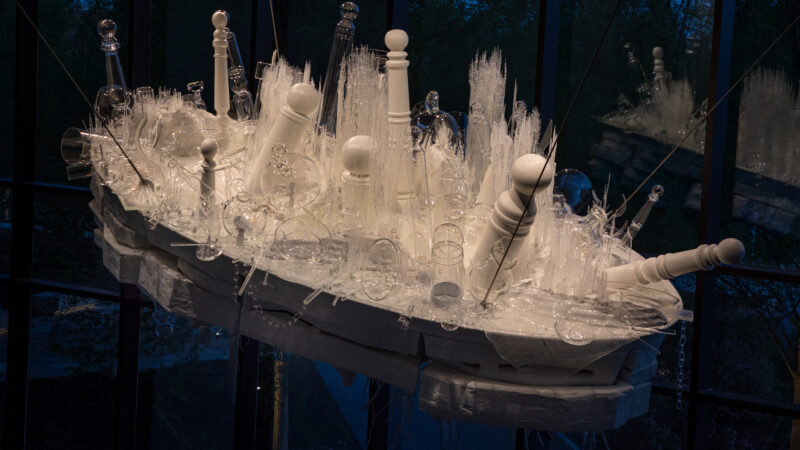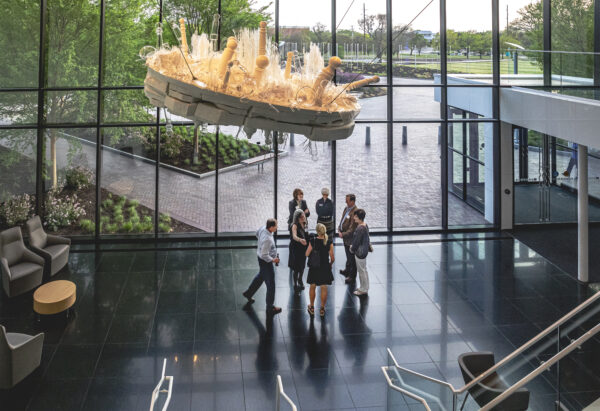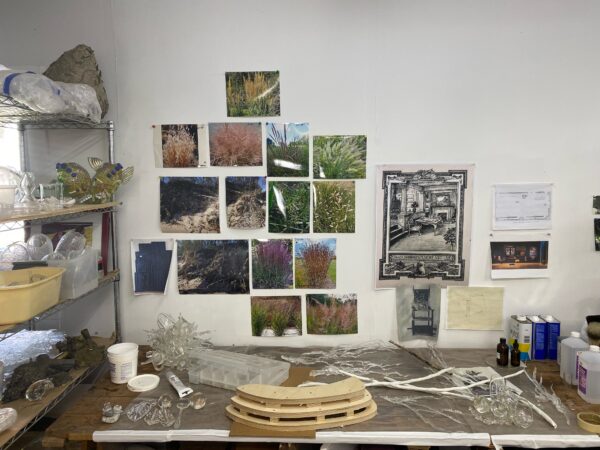“Living History” by Beth Lipman

“Living History” by Beth Lipman
On view in the Boeing Foyer
WAM's Newest Commission
About the Artwork

Artist Beth Lipman (center) talks with attendees at the First Viewing Reception of Living History — April 28, 2022
As Lipman continues her strong national reputation, the Wichita Art Museum proudly commissioned her for a landmark artwork. Living History, now in the Boeing Foyer, marks a milestone for WAM as a savvy museum with a prized and growing American art collection.
History and how objects and artwork carry meaning about the past–whether geological, environmental, or human–fascinates Beth Lipman. She investigates how 17th-century Dutch artists turned to still life painting to reflect a new luxury of merchant entrepreneurship. She probes Victorian furniture as expressions of social class, life cycles, even mortality. As Museum of Arts and Design Curator of Collections Samantha De Tillio wrote of Lipman, “Objects have vast stories to tell about who we are and what we value, and how we self-identify . . . Lipman engages this by mining material culture.”
As you visit and explore this new icon for the Wichita Art Museum, take time to look for objects that connect this majestic new artwork to its new home in Wichita.
Living History is generously supported by the F. Price Cossman Trust, INTRUST Bank, Trustee.
About Living History

Artist Beth Lipman’s studio
For her many commissions, Lipman is laser focused on the history of that museum, that region, and that ecology. For Wichita, Lipman was overwhelmed by her first experience of the Flint Hills and set upon incorporating a strong sense of place into Living History. In her unique way, Lipman layers traditional and unconventional references for our city on the plains. She is eager for viewers to appreciate deep time–or geological time–as well as man’s imprint on place. Delicate tallgrass, stubby short grass, Flint Hills rock formations all evoke our place in the Midwest prairie. Barber poles from the Americana collection, light poles from Derek Porter’s Pulse Field in the Lattner and Walker Family Plaza, forms from Louise Nevelson’s Night Sun III in the Sam and Rie Bloomfield Gallery all reflect our museum’s collection. Goblets, vases, candlesticks recall Lipman’s own vocabulary and artistic aesthetic. The conglomeration of so many disparate parts is visually arresting and also conceptually rich. Living History offers a sophisticated statement on life in Wichita.